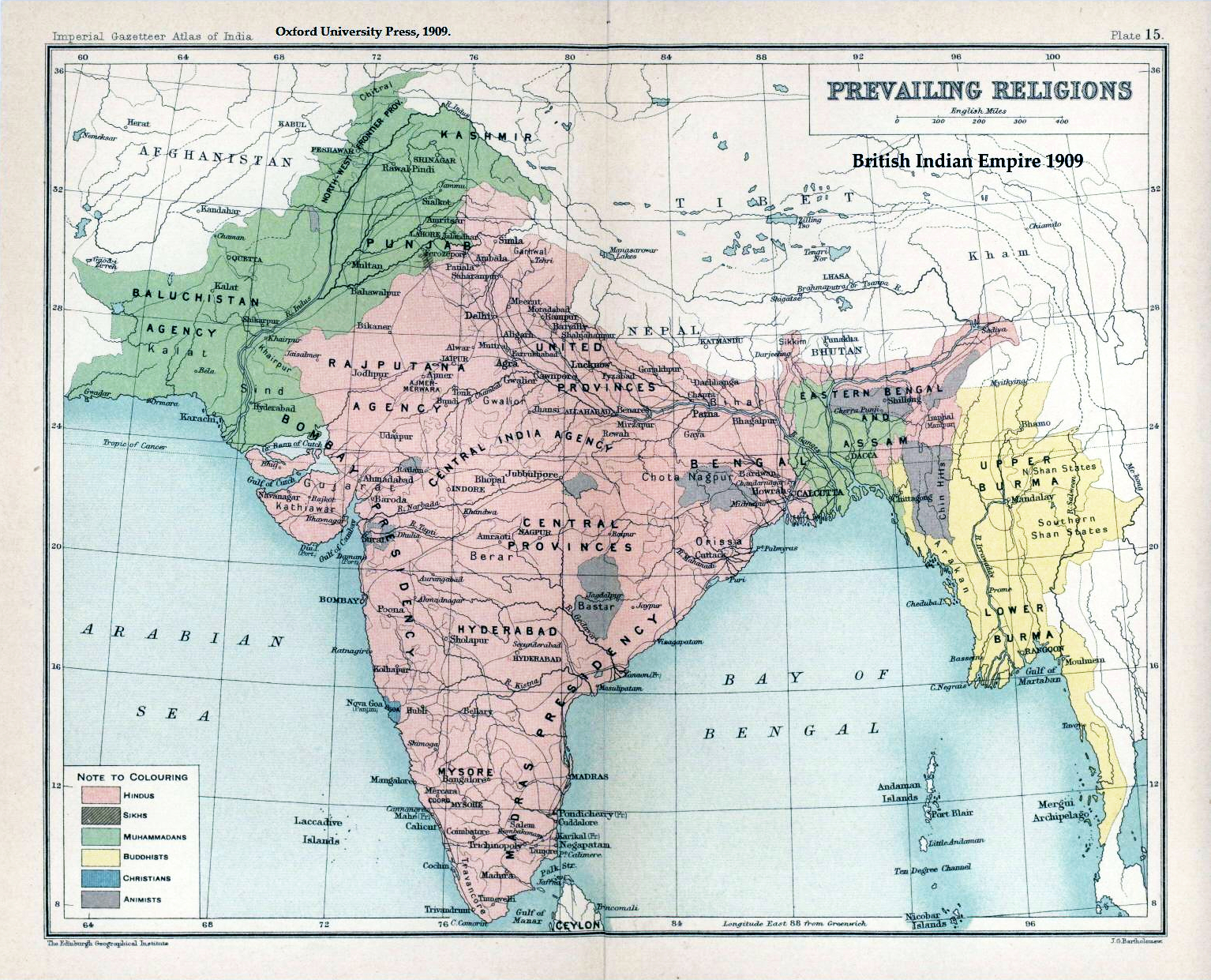The subcontinent of India, ruled for nearly a century by the British Crown, was broken into its many states following its independence just two days before. The Punjab, a term denoting the area rich in diversity with Muslims, Hindus, and Sikhs, was to be broken into West Pakistan for the Muslim population and India for the Hindu population. As the British Raj was preparing to leave (Parliament had declared on July 15 that its government would end in a months' time), Sir Cyril Radcliffe was appointed as chair of committees to draw this line as well as another for the separation of Bengal to become East Pakistan (now Bangladesh).
It was hoped that Radcliffe, who had never been to India, could serve as a fair and impartial decider. The Muslim League and the India National Congress had many of their own ideas to submit, but voting was so balanced that the final decision belonged to Radcliffe. Behind secrecy to avoid political pressures, speculation, and reprisals before the publication of the decision, Radcliffe worked with haste to determine an objective border that would grant proper transport, communication, and waterways to both sides while keeping both sides toward their majority population. At the same time, he worked to develop another line to demarcate India, East Pakistan, and Burma.
Upon hearing of the Buddhist majority in the Chittagong Hills, yet another people-group to recognize, Radcliffe suffered something of a breakdown. No matter what he did to draw boundaries, no one would be completely satisfied. The pressure of coming up with at least something workable in five weeks had pushed him, and Radcliffe made the decision to have the people vote for themselves.
On August 15, Independence Day, Radcliffe gave his plan with the new government and left the country. With political turmoil slowing down publication, it was not until the 17th that Radcliffe's plan became published. He had drawn intense and complicated borders through states, creating mini-states within populated sectors. He recommended that special elections held by the people would establish whether these countries would go toward Pakistan, India, Burma, or even strike out on their own. The “Radcliffe Cloud” was born.
A cry went out that Radcliffe had overstepped his powers to create new countries, but, via telegraph from his ship, he assured governments and peoples alike that he had simply drawn the borders. Without the peoples' agreement in the first place, there would be no government. A commission through the winter would investigate Radcliffe, but in the end he would exonerated and, in many circles, applauded.
Elections, well guarded by the Punjab Boundary Force, carried through the rest of August. The hills above Chittagong, now in East Pakistan, voted to stay with India, despite the inaccessibility (which would be later solved by a massive bridge and highway project). Several new small states that had been split by Radcliffe's many lines divided into India and Pakistan. A few states tried for independence, but most were absorbed within the end of the decade after facing budgetary constraints. Only the nations of Kashmir, Sikkim, and South Pakistan (now Hyderabad) stand as independent to this day.
Not everyone was content, however, and fighting broke out sporadically after the separation. Businessmen and farmers complained about water rights in certain areas, and legal issues have caused minor conflicts. There have been several border altercations since, such as 1971 when India became involved in the Pakistani Dissolution that gave independence to Hyderabad and Bangladesh, but no wars of international importance have come out of the balkanized Indian Subcontinent to this day.
–
In reality, Radcliffe drew his borders as quickly and fairly as he could to complete his task and give foundation to the new countries. The line of separation divided villages, heavily populated areas, private land, and even homes. This rapid demarcation caused the largest migration in human history: 14 million people displaced as Muslims moved to Pakistan and Hindus to India. Thousands would be killed in the chaos as the mere 50,000 men of the Punjab Boundary Army could not begin to police the area. Radcliffe himself left on the Independence Day of August 15, burning all of his papers as he went, and the new nations had to govern themselves. Since then, several wars and in-country police actions have come over the nations as they worked bloodily to sort themselves out.

We reverse this in Radcliffe admits defeat a scenario in which the Raj is returned to the Princes according to the original treaties.
ReplyDeleteAlso we revisit this concept in 18th September, 1948 - Civil War breaks out in Hyderabad.
ReplyDelete